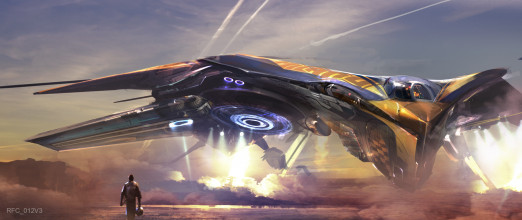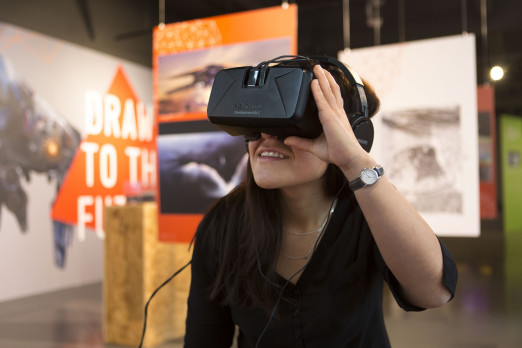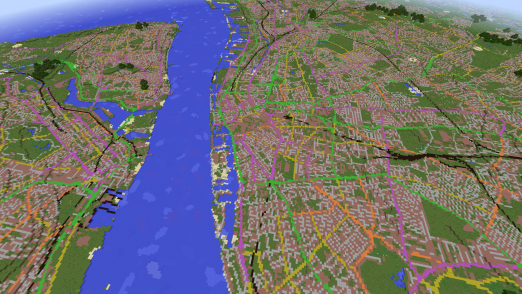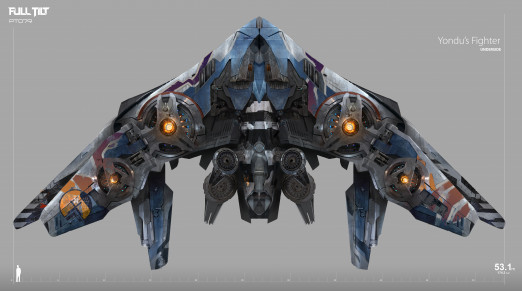Interview with Ron Ashtiani, Atomhawk
Space architecture
Concept art for Guardians Of The Galaxy, by Atomhawk
Sci-fi environments in superhero movies and games come from the imagination and end up in the imagination – in-between somebody has to draw them. Atomhawk, Gateshead, are world leaders in this skill of ‘concept art’. The studio’s designs feature within much of the screen imagery in the Marvel movie blockbusters Guardians Of The Galaxy and Avengers: Age Of Ultron. Their background is in the games industry (credits include Mortal Kombat X) but now their envisioning skills are in wide application: with architectural and engineering drawing skills mixed in alongside the gaming knowhow, they designed a fighter for Guardians Of The Galaxy that was then partly built by BMW in order to become a set. Back on planet Earth, Atomhawk artists recently worked with Pininfarina on a coffee machine for Costa.
With a couple of examples could you explain the function of concept art for movies and games?
Atomhawk Director, Ron Ashtiani: Concept art is used to convey a visual representation of a design, idea, and/or mood for use in films, video games, animation, or print before it is put into the final product. It aims to convey the overall design vision so can be used to set the style for a particular character, location or prop in a single image which can be taken and made real in the form of a film set or taken to the next level of more detailed design for a video game.

Research
There is a long and distinguished history of Concept Art in from Syd Mead’s benchmark work for US Steel and later for Ridley Scott’s Blade Runner, and of course Ralph McQuarrie’s work for George Lucas on Star Wars. Who have influenced and inspired the team from this field? Do you do any research around engineering in visualising the spaceships, technology or architecture?
Ron Ashtiani: Our research very much depends on the nature of the brief, the overarching style of the game or movie and the individual style of the spaceship or architecture. Engineering can come in to it, and concept art for film in particular can often demand precise drawings that are almost architectural in nature as the spacecraft or building may eventually be built as a real set. However, often research is led more by genre, period and the style and feel of the production.
For Guardians of the Galaxy for example, the architecture and spacecraft needed to draw on a history of architecture from fantastical, galactic cultures; a futuristic technology juxtaposed with the retro design of the 80’s. As a result we drew on reference from pulpy science fiction films like Forbidden Planet, Fantastic Voyage and Barbarella.
However, for the Milano in particular, we ended up taking our research back to the 1940s and 1950s air and spacecraft to get the sense of aspiration, style and colour that could make the kind of beautiful but functional spaceship that could live up to boyhood dreams.

Making
What was the brief? What kinds of backgrounds do the team bring to the work and could you describe the workflow and the process?
Ron Ashtiani: Director James Gunn communicated his vision for the film as “Guardians of the Galaxy would be about colour, and life. In-your-face, over-the-top, unrepentant COLOUR”.

The brief to us was to avoid the usual references to Blade Runner, Alien and Logan’s Run and focus on the aesthetics of the kind of retro sci-fi movies mentioned previously. We would have an explicitly postmodern palette, contrasting colours and a history of architecture from fantastical, galactic cultures.
What kinds of backgrounds do the team bring to the work and could you describe the workflow and the process?
Ron Ashtiani: Atomhawk worked on Guardians of the Galaxy for over a year, with a core team of four artists, creating key images, action shots, spacecraft and locations.
The team who worked on the film are all experienced concept artists, all having worked mostly in the video games industry, although one particular artist had originally trained as an architect before transferring his drawing skills over to the entertainment industry.
The workflow and process varies slightly depending on the individual client and project. For games projects we tend to have more time to develop each image and work to more of a gated process where an image is taken to a certain level of detail, feedback is gained from the client and we continue to iterate in this way until the image is complete. When it comes to film, the schedule is much tighter and long loops of feedback and iteration aren’t acceptable. Instead we use a process of creative convergence, where we create a larger, more varied and less detailed selection of initial sketches, time-boxing each one. From these many ideas we can then spot a single creative gem that can be developed further.
Drawing tools?
Ron Ashtiani: All the artists at Atomhawk use either a Cintiq or Wacom tablet and pen, working in Photoshop, to create concept work from original sketch to final polished image.

The Visual
What kinds of details do you need to build into an image?
Ron Ashtiani: The kinds of details we need to build into an image is very much dependent on the brief and the vision and interpretation of the individual artist.
One of the most challenging aspects of the work was how to imagine a Marvel comic from scratch, rather than working with an existing film franchise as we had done with our first Marvel project, Thor: The Dark World. However, after our initial questioning of what this one was all about and why had we never heard of it before, we soon began relishing in the creative license this gave us and turning the challenge in to a massive positive.
How did your imagery evolve into the final film?
Ron Ashtiani: Several of our spacecraft, environments and key action shots are instantly recognizable in the movie and relate very closely to the images we supplied to the production team. Some, such as the Milano, were made in to full sets while others were created through VFX. You can see examples of how our concepts for the Milano and Dark Aster spacecraft, environments including Knowhere, the Collectors Room and the Kiln Prison and key scenes such as Young Quill’s abduction translate in the film here.

Futures
Famously, the illustrated poster for 2001 A Space Odyssey features a ‘tablet’ used in the Kubrick’s movie, are there any technologies you’ve drawn which you think might jump from the fictional to everyday life? What’s next in concept art?
Ron Ashtiani: I think the future of concept art for us, involves further amalgamation of art and design. Concept art is becoming more complex as the end platforms and technologies that we produce ideas for, advance forward.
20 years ago concept art was at best a pencil sketch or gouache illustration. Now we're using design talent that is more akin to an architect, costume or product designer.
The ability to create inspirational art that touches the soul, but also with the depth of thought seen in design industries, is the key for the modern entertainment industry.
As for the future of Atomhawk? Well we're ones for constant improvement of the craft. Exploring new techniques such as hybrid workflows involving 2D painting and 3D modelling.
Business wise we want to bring our work to new markets. We started in games, branched into movies and now we have our minds set on UI/UX and the advertising world. We feel that we can make user interfaces beautiful, entertaining and functional. The advertising industry relies on imagery to sell ideals and we're in a great position to deliver something breath-taking there too.
For more on the range of work that Atomhawk do, click here




